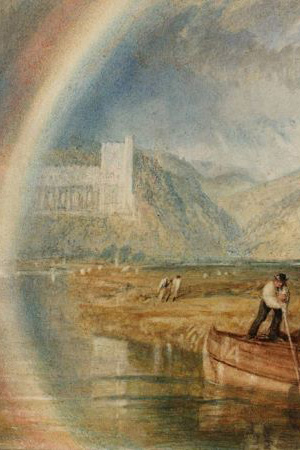A Thing of Beauty Reading the Romantics in a World on Fire

The English Romantic period (roughly 1780-1830) was marked by political instability, the shadow of war, climate crisis, technological advancements on a previously unknown scale, social injustice, and real questions about what ordinary people were supposed to do next. Artists brought these questions to life, in ways we’re still trying to answer: Why keep seeking beauty even in the midst of fear? How should we relate to the nonhuman world that our human-made machines are damaging every day? Why is a woman’s brain not inherently inferior just because it’s housed in a woman’s body? Why does it matter to keep making art even when no one else seems to care? How do we create “monsters” by giving way to our own paranoia, even when, in the case of technology, some paranoia may be justified?
To borrow a line from John Keats, knowledge is a “living hand… warm and capable” that stretches from the complex past to our no-less-complex present, reminding us we’re not alone. That this present moment is not all there is. That capacities can be built and anxieties faced. That some amazing artists have wrestled with the same problems we face and come through. And many people – particularly those under 25 – are hungry to hear these things, right now.
The first book of its kind, A Thing of Beauty: Reading the Romantics in a World on Fire (forthcoming from Bloomsbury Academic) extends this “living hand” to a new generation, telling the increasingly little-known stories of the English Romantic writers – some of the most unique artists and humans who ever lived – to show how they can help us build the personal and social capacities we need to thrive in our challenging world right now. Rattled by technology, climate change, political dysfunction, wealth inequality, and gender bias, and wrestling with how to relate to an inherited past that can be both burden and treasure-house, the Romantics’ world looked a lot like ours. The art they made still points a way for us to behold, question, and rebuild in order to keep moving into our own futures, right now. Encountering these great writers can still change our lives for good — building our capacities, and our hope, for what’s coming next.
Table of Contents:
Introduction: Onto the Sea of Ice
Chapter One: “Without the Muffle:” Byron, Boxing, and Authentic Life
Chapter Two: “Rise Like Lions:” William Blake, Percy Shelley, and Art in Action
Chapter Three: Wings in the Abyss: John Keats and the Art of Uncertainty
Chapter Four: “Fallen London:” Anna Barbauld and the End of the World
Chapter Five: Victorious Women: Mary Wollstonecraft and Jane Austen
Chapter Six: “My Hideous Progeny:” Mary Shelley and the Monsters We Make
Epilogue